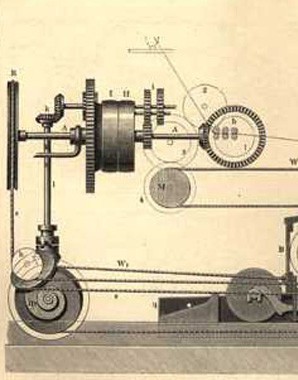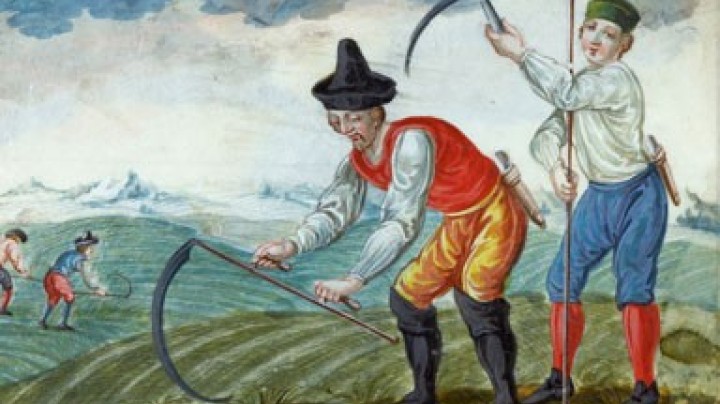‘Spinning Jenny’ versus the workshops or ‘manufactories’ – Of workshops and new machines
The products of the workshops and the outworkers they employed were ‘hand-made’. Machines took over when an Englishman invented the Spinning Jenny.
Johann Matthias von Puchberg, who worked as an accountant in the calico factory in Sassin, described the division of labour.Most of the spun and almost all the half-cotton fabrics were obtained in Austria and sent to the factory in Sassin for printing and finishing only. Thence they were returned to Austria to be sold.
The system of workshops and outwork was widespread in the Habsburg Monarchy, especially for the manufacture of textiles but also for metal processing and the production of porcelain.
In the Age of the Workshops – as the eighteenth century is called – it was the so-called factors who were link between the rural outworkers and the workshops. It was only the preparatory and the final stages in the production process that were carried out in the workshops themselves. They were also where the business and administrative offices were located. Most of the actual work was, however, carried out by homeworkers.
Most of the owners of the workshops or ‘manufactories’ were either middle-class wholesale traders or aristocratic entrepreneurs, who often came from abroad, bringing the capital needed with them. Craftsmen, traders and aristocrats accounted for around two-thirds of the entrepreneurs in this sector. The number of companies was relatively small, but these were very large enterprises.
The workshops were organized on the basis of the division of labour and were partly mechanized. That meant that one worker was responsible for just one stage of the process of production and not for the whole product. Contemporaries also referred to the workshops as ‘factories’. However, compared with the later industrialized factories they had a much lower level of mechanization and did not use steam engines.
At the turn of the eighteenth to the nineteenth century spinning machines revolutionized the mass production of textiles. The ‘spinning jenny’, invented in England in the middle of the eighteenth century, served as a model for the introduction of machines. It made spinning by hand in workshops or at home obsolete. In Lower Austria the number of hand spinners dropped from 100,000 at the end of the eighteenth century to 5,000 in 1813. These workers then changed from spinning to spooling.















